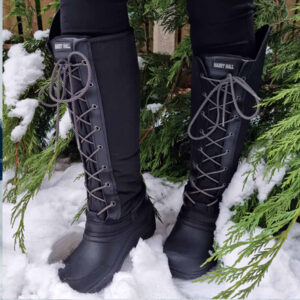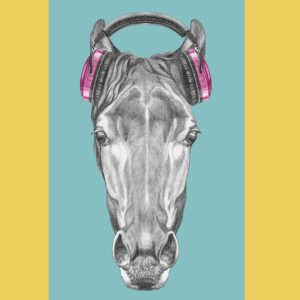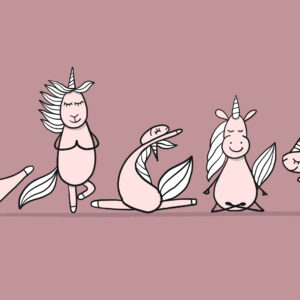Hot Topic: Social license and horse sports – the future?
Looking at the photo illustrating this piece – do you see first a horse with a ‘harsh’ double bit and a rider with spurs or do you notice the gentle pat and the calm eye of the horse? Even from within the equestrian community, let alone those outside it – many are torn about what the image represents. This sums up the major topic of the moment – the future of horses in sport with regard to the social license to operate (SLO). Those of us who enjoy either competing or watching horses compete cannot shy away from the fact that whatever happens, even in the short term there are significant changes ahead – it is our road to Damascus moment.
Society as a whole has become super conscious of animal welfare and ethical concerns so if we want horse riding, let alone horse sports to continue then as equestrians, we must surely lead the way in putting greater emphasis on ensuring the well-being of all horses in sport. Sure we can concentrate on welfare within our own disciplines but advocating for all horses would serve us better. Only by doing so, I believe, can we help shape a future where social acceptance is not removed completely, but wow do we need to be proactive. A recent World Horse Welfare survey showed that only 20% of people already do not support the continued use of horses in any capacity in sport!
“to know as a competitive rider your, ‘welfare score’ will be made public. Imagine if moves like this radiated out to all national and international competitions that would at least begin to show to a skeptical public that we are being transparent about horse welfare.“
Enhancing welfare standards across the board has got to be the top priority. Stricter regulations and guidelines are already being implemented by sporting bodies (like the FEI) to safeguard horse welfare but do they go far enough? Many think not with criticism of cronyism and organisations with no teeth. After the ugly scenes and fallout from the equestrian competition of the Tokyo Games Pentathlon in 2021, the French government was so worried about the aftermath they commissioned a report that has come back with no less than 46 recommendations for horse welfare at the Paris Games in 2024. The report even suggests, “An equine welfare scoring system could be in place during training and competitions, over the entire duration and presence of the horse in the Olympic precinct… A score would be awarded at the end of each event, with a brief explanation of the bonuses and penalties obtained by each horse. The detail of the mark would be accessible to everyone on the Internet. This would allow teams to pay more attention to equine well-being, to raise awareness among amateur and professional riders at a lower level and finally, to offer the general public a positive message about this sport.”
You can read the full report translated to English here
Read that again – to know as a competitive rider your, ‘welfare score’ will be made public. Imagine if moves like this radiated out to all national and international competitions that would at least begin to show to a skeptical public that we are being transparent about horse welfare. Many from within the industry may not like it but you have to ask yourself, if they have something to fear, things need to change anyway.
Improved veterinary care, monitoring systems, and training practices designed to minimize the risk of injuries and stress are all to be applauded, but if we continue to allow harsh training methods, extreme bitting, rollkur, or the training and racing of horses before their skeletal systems are mature – are we doing enough? Criticism isn’t just coming from outside the equestrian community it’s rife from within. Scroll down the comments on any horse sports Instagram post and the divisions within the equine community are clear. Remember the online outcry when former showjumper Danni Waldman confessed that her horses were never turned out. In some countries, turnout freedom is already being mandated – Sweden is leading the way here.
Addressing allowing freedom for the horse in its downtime to wander and interact with other members of its species is really no more than what the world demanded decades ago for captive zoo species.
Addressing allowing freedom for the horse in its downtime to wander and interact with other members of its species is really no more than what the world demanded decades ago for captive zoo species. Every time we ride we are asking sentient being to step out of their comfort zone for human pleasure surely regardless of their ‘worth’ we need to allow our equines freedom to just be horses when they are relaxing at home.
Awareness about the post-athletic lives of horses is also growing rapidly – can we always answer such questions easily? Should we be focussing more on a good transition for retired horses into suitable environments? Adoption programs, rehabilitation centres, more professional rehoming centers – should these all be established to either provide a comfortable life for retired horses or owners should ensure those who are unsound or untreatable are humanely put to sleep not passed around? More effort to support and care for horses during and after their athletic careers would definitely help horse sports remain palatable.
Personally, and I speak as a horse breeder (in the UK) – I think all horses should carry an electronic passport that follows them throughout their lives and in which health concerns and treatments are recorded. That would sure put out of business many of the dodgy dealers to whom horses are a commodity to be used and abused to make a fast buck and to whom welfare is a dirty word. Good dealers will survive and welfare will exponentially increase.
We also need to take note of any technological/scientific advancements that can help us when it comes to horse welfare. Innovations such as improved track surfaces, and science and data-driven training techniques that aim to minimize injuries and promote the overall well-being of horses should all be embraced. Greater research needs to be done about the stress or otherwise, that horses feel while competing.
Stakeholders, including animal welfare organizations, veterinarians, trainers etc all have an essential role in voicing concerns early, advocating for positive change, and influencing policies. Such stakeholder voices should be listened to and good welfare decisions acted on quickly. We also need to ensure swift and long-lasting retribution or a rehabilitation programme for any pro riders disregarding such information to the detriment of the horse. This may sound harsh but will filter to amateur ranks as non-acceptable welfare. Andy Kocher being found guilty of riding his horses in electric spurs should he automatically have been given a ban for life not just for 10 years? Many think so – if we can’t be seen to keep our own house in order be sure that the public will do it for us!
Of course, this is a huge, complicated topic but hopefully going forward, as equestrians we can strike a balance between preserving the good traditions of horse sports while acknowledging and addressing the evolving ethical considerations of modern society. We need to urgently prioritise the well-being of all horses and engage in open dialogue – the future of our relationship with the horse and sport depends on it.
What do you think? Have your say below.
Where do I come from on all this – a bit about your writer? I am an amateur showjumper and breeder of horses for well over 30 years now who has always enjoyed some horse sports. I am not a believer that horses ‘love’ what they do rather I think that horses trained well, slowly and sympathetically feel confident enough to feel a certain ‘joy’ in what they do. My horses live outside pretty much 24/7 in a mixed herd – although being on a windy hill in Scotland sometimes they come in overnight in winter. They have enough feed, shelter and company to pretty much be horses when they are not on ‘human time’. For me personally, I would neither keep nor compete them if I was not able to offer them this payoff of a good life in exchange for me riding them. I think that horses at the top end of any sport now are being pushed to their physical limits and for this reason, I no longer enjoy watching top eventing cross country phases where bad falls and death of not only horses but riders seem to be becoming increasingly acceptable – its not! I am starting to wonder how in showjumping we can ask half a ton of animal to clear the hugen technical fences again and again without knowing more research wise about the levels of longevity achieved in these horses. How many disappear from view after a couple of years? What are the stats on those that have long careers and what do their medical records look like? Top level dressage is probably my least liked sport so many clearly stressed, overbent tight horses performing under mental and physical pressure. So, where do you sit on this topic? Let me know 🙂







I have also been turned off eventing these days. Hate seeing the carnage – too many difficult questions one after other for the horse’s these days.